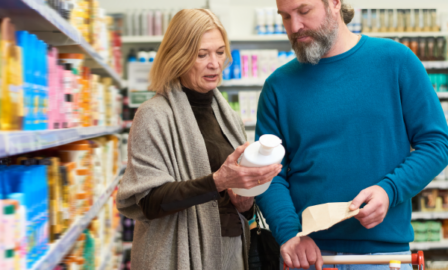The Future of At-Home Beauty and Skincare
During the pandemic, at-home skincare, and specifically skincare, took off and became a focus of consumers and industry leaders. While people are no longer confined to their homes as they were during COVID, users continue to have a large appetite for at-home beauty. The concept intrigues consumers because they’re provided with the flexibility to schedule spa or clinic skin treatments while also being able to intersperse treatments at home, which can be convenient and cost-effective. Let’s explore the future of at-home beauty!
Seeing this, beauty and makeup companies are becoming more involved in at-home skincare and electric mask offerings. While there are many companies competing in these segments, PMD Beauty and Beauty Ora offer beauty tools that are taking hold in the market. These beauty devices include LED facial masks, crystal rollers, dry brushing, and many others that are fascinating customers around the world.
Evolving Health & Beauty Landscape
While users were once intimidated or reluctant to try these beauty tools due to fear of unintentionally hurting themselves, experiential learning is encouraging and guiding users as they explore and learn about new products or at-home devices. Experiential learning is a growing trend that is attracting consumers, and with resources such as TikTok and Instagram, the opportunities are endless. TikTok is being used as a search engine by both brands and consumers to find new products and trends. The use of both micro-influencers and influencers is a common strategy used by brands to illustrate how to use the product and gain traction amongst consumers.
Beauty as we knew it is evolving and becoming more than simply makeup. Skincare, self-wellness, and related fields are becoming more important. PSYCARE is a beauty category emerging that emphasizes treatments that soothe the body and the mind. Putting on makeup and having a beauty ritual now goes beyond the superficial appearance and encourages a self-care routine, even for younger generations. This category will continue to feed beauty device development and consumer wants.
The Future of At-Home Beauty Devices
At-home treatments are becoming more prominent, with “global home beauty devices achieving a value of $14,025M in 2022, and the market expected to hit $89,876M by 2030.” Even in economic downturns, some beauty projects are more likely to do better than others since consumers value feeling good, also known as the lipstick effect, even when funds are limited.
The growth of at-home beauty devices can be attributed to multiple factors. One is how technology has advanced to provide better and safer beauty offerings that result in a reduction of user hesitancy to try new devices at home. Further, there’s also a growing concern about one’s appearance, and with an aging population, there is positive sentiment toward trying at-home devices. Along with this, skin disease is on the rise and impacts 1 in 4 Americans according to the American Academy of Dermatology. This demonstrates that there are both health and beauty reasons for which consumers are increasingly trying and using at-home devices.
There are many at-home treatments hitting the market, seemingly constantly, but there are a few that standout. Hair removal is the biggest at-home treatment and has low difficulty compared to going to a spa or parlor. This makes users very willing to try this task at home. Devices that target skin rejuvenation are also showing fast growth. While laser light technology is one of the most adaptable beauty technologies and has the ability to quickly lighten and tighten users’ skin. There is also an instant satisfaction and visual proof of improvement.
Seeking Convenience and Ease
Even though there’s a growing interest in at-home beauty devices, it’s still critical to market products that resonate with consumers. A key factor that consumers look for when selecting a product is convenience. They are not beauty experts, and they want the tools to be easy and quick to use. Along the same line, non-invasive procedures are especially appealing and ones that focus on providing a better skin treatment have great potential.
How Clarkston Can Help
While at-home beauty devices are cost-effective and tend to be easy to operate, consumers desire a self-care routine that will definitively enhance their beauty. With the field evolving and continuing to grow, many beauty corporations are already involved and leaning into its potential. There are various ways for companies to become involved, like forming partnerships with new technology companies, creating their own products, or buying smaller companies with desirable technology.
While some at-home beauty products may fade, the desirability and opportunity of at-home products will not. Thus, timing is of the essence, and starting conversations with health and beauty experts early on to develop a strategy will be key.
Subscribe to Clarkston's Insights
Contributions from Addie Schmidt



